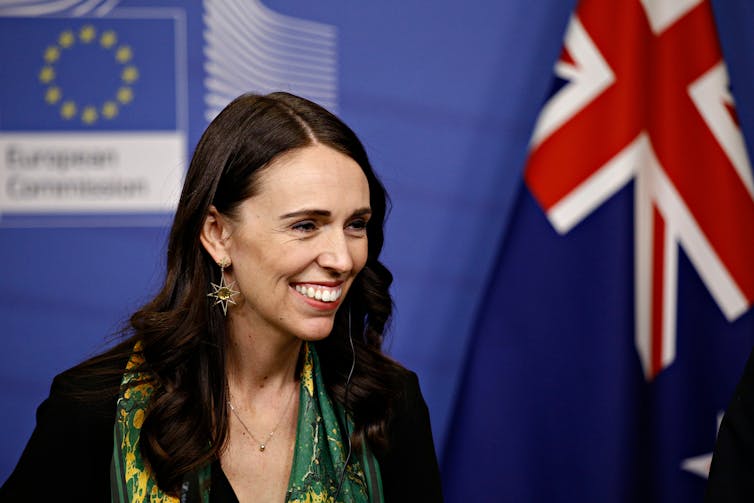Seven reasons more female leaders would be a positive step for the climate
Seven reasons more female leaders would be a positive step for the climate

Initially, everyone on the organising committee for the COP29 global climate summit was male. In response, the She Changes Climate campaign group stated that “climate change affects the whole world, not half of it”. A backlash followed and women have since been included to enhance representation within the committee.
A gender-balanced committee is not only a matter of justice and representation, but it also represents a strategic choice. Addressing the complex global challenge of climate change requires diverse perspectives and experiences. Female leaders can bring different qualities to the table.
1. Caring about nature
If leaders care about the planet, climate policies will reflect that. Data shows that as citizens, women tend to care for nature and the environment more than men and they tend to be more responsible for actions which may impact the climate change.
According to this European Social Survey data, the share of women who agreed that it’s important to care for nature and the environment is higher than the share of men in all European countries. The difference is not large, ranging from 7% in Austria to 0.3% in France, but the pattern is consistent across all countries.
When people were asked whether they feel personally responsible for reducing greenhouse gas emissions, 52% women agreed compared with 48% of men. More than 63% of women agreed that limiting their energy use reduced greenhouse gas emissions, compared to just 36% of men.
2. Wanting to take action
When first appointed to their roles of prime minister in New Zealand and Finland respectively, Jacinda Ardern and Sanna Marin both declared that climate change was an emergency and announced actions for their country which influenced the global efforts to mitigate climate change.
Female policymakers agree more than men on the need of measures for the environment, according to data from the Comparative Candidate Survey . Among politicians who ran for the national parliament elections, 83% of women believed that stronger measures should be taken to protect the environment, compared to 75% of men.
My own research shows that the difference between men and women is significant even when we control for individual characteristics, including age, ideology, education, religion, occupation and number of children.
3. Making change happen
Firms with more women in decision-making positions tend to perform better on environmental and sustainable outcomes. I found that companies with three or more female directors perform better on specific measures of environmental performance.
The share of managers also matters: a higher female presence in managerial positions is associated with better environmental performance. This is measured by an indicator which considers different factors: pollution of air, land and water and the impacts on biodiversity, the use of non-renewable energy, water, land, forests, minerals, the production of waste and new product development efforts to remedy these problems.
4. Being altruistic
Men and women tend to show differences in social orientation. As American sociologist Nancy Chodorow outlined in her 1978 book, The Reproduction of Mothering: Psychoanalysis and the Sociology of Gender, women are directed toward the caregiver role, so they are encouraged to be more compassionate, nurturing, protective, and cooperative than men. Experimental research in 2001 confirmed that women tend to be more altruistic and socially oriented than men.
5. Having more opportunities
Gender roles and different opportunities may also play a role in gender differences in attitudes towards the environment. The biological availability hypothesis suggests that women spend less time at work than men and more time at home, so they have more opportunities to engage in private pro-environment behaviours such as recycling and water use (although this doesn’t mean they have more free time). Women also tend to be more concerned than men about health and safety issues and this is reflected in higher levels of environmental concerns.
6. Approaching risk with caution
Women perceive risks differently. Women tend to be more risk averse than men, as they tend to prefer an outcome which is certain to an uncertain one associated to higher return.
7. Taking the long-term view
When approaching climate change, women tend to offer fresh perspectives, creative problem-solving skills and inclusive leadership styles. As climate change affects everyone, our collective effort benefits from acknowledging the diverse ways in which men and women express concerns about the issues and propose actions for the future. Women tend to be more patient and willing to wait for higher reward in the future and they care about the consequences of their actions over a longer time frame.
In any decision-making process, personal leadership style is a crucial factor. Gender plays a significant role in shaping that style and female leadership style tends to focus more on long-term goals. That can help drive solutions that mitigate and adapt the impact of climate change.
Including more women at the table at the future climate summits is an essential step towards making real change. Each of us can make the difference, as citizens, voters, business entrepreneurs and decision-makers to promote better representation and more balanced decisions, for now and for future generations.

Don’t have time to read about climate change as much as you’d like?
Get a weekly roundup in your inbox instead. Every Wednesday, The Conversation’s environment editor writes Imagine, a short email that goes a little deeper into just one climate issue. Join the 30,000+ readers who’ve subscribed so far.![]()
Paola Profeta, Dean for Diversity Inclusion and Sustainability, Professor of Public Economics, Director of Axa Research Lab on Gender Equality, Bocconi University
This article is republished from The Conversation under a Creative Commons license. Read the original article.
Không có nhận xét nào: